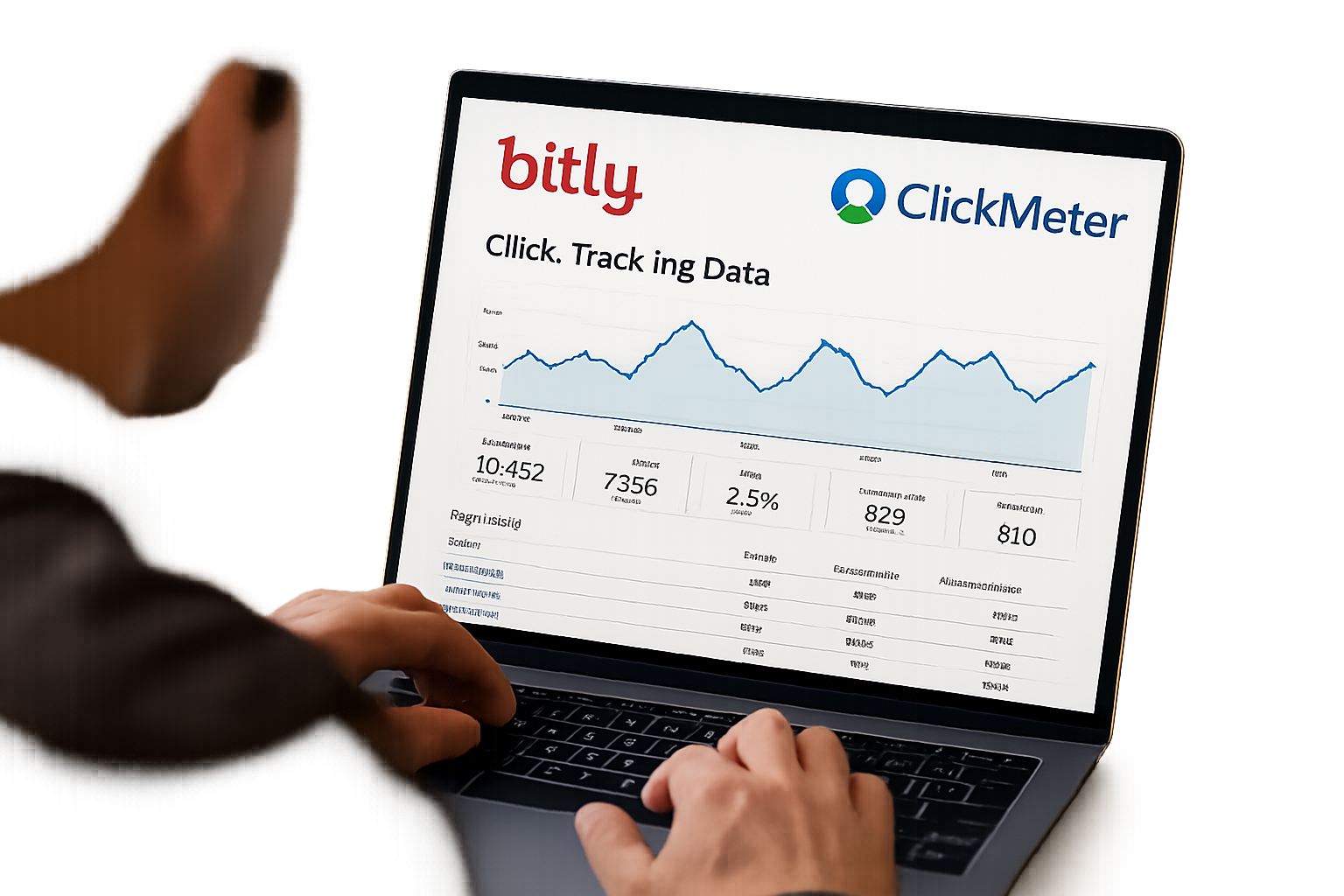Affiliate marketing stands as a dynamic avenue for monetization, blending creativity with strategy to generate income across digital platforms. Yet, the true measure of success in this landscape is rooted in precise tracking of your affiliate marketing performance. As consumer behaviors and digital ecosystems evolve, grasping the nuances of your campaign data becomes indispensable. From understanding click patterns to pinpointing conversion rates, tracking transforms raw numbers into actionable intelligence.
In this environment, marketers must adapt to advanced tools and methodologies that transcend basic tracking. Incorporating platforms like Google Analytics alongside specialized affiliate tools such as Post Affiliate Pro or ClickMeter, offers a multi-dimensional view of your impact. Moreover, staying informed about current trends—as explored in resources like affiliate marketing trends to watch in 2025—is essential to consistently refine your approach.
Effective tracking not only reveals which products resonate but also guides strategic choices in content creation, target audience engagement, and campaign optimization. This requires a hands-on approach with data-driven experiments, enabling marketers to evolve from guesswork to precision targeting. It’s a process that demands continuous learning, amplified by a well-structured framework for evaluating campaign metrics and tools.
This comprehensive exploration will unpack advanced strategies and practical tools to master affiliate marketing performance tracking, helping marketers move beyond basic insights to harness robust data intelligence that fuels sustained growth and profitability.
Mastering Affiliate Performance Tracking with Advanced Software Tools
In 2025, the cornerstone of successful affiliate marketing lies in the ability to effectively use tracking software that not only records clicks and conversions but also analyzes patterns across multiple channels for holistic insights. Modern affiliate tracking platforms such as Voluum, CJ Affiliate, and Refersion provide marketers with the automation and precision needed to monitor campaigns comprehensively.
These tools should offer several core capabilities:
- Automated and Real-Time Tracking: Automatically monitor clicks, conversions, sales, and other actions to swiftly react to performance changes.
- Cross-Channel Attribution: Track user journeys across platforms like social media, email, and organic search to accurately attribute results.
- Comprehensive Reporting: Access detailed, customizable reports featuring metrics like click-through rates (CTR), earnings per click (EPC), and ROI.
- Integration with Popular Analytics Tools: Seamless connection with Google Analytics and tools like Bitly for URL shortening and link tracking amplifies data richness.
- User-Friendly Dashboard: Intuitive interfaces that present complex data visually, facilitating quick interpretation and decision-making.
Consider a marketer, “Lisa,” running a multi-product campaign via AvantLink. Using Voluum, she observes that paid social ads have higher clicks but lower conversions compared to organic blog referrals. By diving into multi-channel attribution reports, Lisa reallocates budget to bolster organic efforts, increasing her overall ROI by 25% in just two months.
The value of such software transcends mere data gathering; it enables adaptive marketing that shifts focus based on real-time feedback — a critical competitive edge in fast-moving markets. For those starting, tools like Refersion and Post Affiliate Pro provide scalable solutions tailored for both beginners and seasoned marketers.
| Tool | Main Features | Best For | Pricing Model |
|---|---|---|---|
| Voluum | Real-time tracking, multi-channel attribution, A/B testing | Advanced marketers with multiple campaigns | Subscription-based, tiered |
| Refersion | Easy setup, Shopify integration, affiliate management | E-commerce and beginners | Monthly subscription |
| ClickMeter | Link tracking, campaign optimization, detailed CTR reports | Marketers focused on tracking and testing links | Subscription, flexible tiers |
| Post Affiliate Pro | Comprehensive tracking, customizable reports | Affiliate program managers and networks | Tiered monthly fees based on features |
| Bitly | URL shortening, click tracking, branded links | Marketers needing precise link performance data | Free and premium plans |
Successful affiliate performance tracking demands investment in the right tools paired with the knowledge to interpret and act on the gathered data. Exploring each tool’s offerings and aligning them with your campaign’s scale and goals is a strategic imperative for 2025 and beyond.

Deep Dive into Key Aff performance metrics: CTR, EPC, Conversion Rates, and ROI
Tracking raw results is only the beginning of affiliate marketing analytics. Understanding and acting on core performance metrics is what truly empowers marketers to optimize campaigns effectively.
Here are fundamental affiliate marketing KPIs every marketer must prioritize:
- Click-Through Rate (CTR): The ratio of users who click your affiliate links versus those who see them. A strong CTR signals effective creative and content placement.
- Conversion Rate: Percentage of clicks resulting in desired actions like purchases or sign-ups, measuring your campaign’s persuasive power.
- Earnings Per Click (EPC): Average revenue earned per click, offering insights on product profitability and marketing message effectiveness.
- Return on Investment (ROI): Overall profitability considering total expenses against earnings—critical for managing budgets wisely.
For instance, a campaign may attract thousands of clicks but if the conversion rate is low, it signals disconnect between traffic source and offer relevance. Marketers can then pivot strategies, experimenting with new offers or refining targeting.
Below is an illustrative example to clarify how measurable differences in metrics inform strategy:
| Campaign | Clicks | Conversions | Conversion Rate | Earnings | Earnings Per Click (EPC) | ROI |
|---|---|---|---|---|---|---|
| Social Media Blitz | 10,000 | 300 | 3% | $1,500 | $0.15 | 150% |
| Blog Affiliate Posts | 3,000 | 150 | 5% | $1,200 | $0.40 | 180% |
| Email Campaign | 1,500 | 100 | 6.7% | $900 | $0.60 | 190% |
In this example, although the social media effort drives the most clicks, it has the lowest EPC and ROI, showing less efficiency than email campaigns or blog posts. The insight guides marketers to invest smarter by focusing on higher quality traffic sources. Learning to interpret these metrics supports data-driven decision making for maximized affiliate returns.
How to Analyze Website Traffic and Its Impact on Affiliate Success
Traffic analysis remains a fundamental pillar in understanding and boosting affiliate marketing performance. Where visitors come from, their behaviors, and engagement levels all shape conversion outcomes.
To conduct effective website traffic analysis, marketers rely heavily on tools such as Google Analytics and heatmap software like Hotjar to track granular user paths. Together, these technologies reveal opportunities to optimize affiliate link placement and improve user experience.
- Traffic Source Breakdown: Identifying main drivers such as organic search, referral sites, social media, or paid ads.
- Bounce Rate Analysis: Highlighting potential content mismatches where users leave without interaction.
- User Flow Insights: Mapping journey paths helps improve navigational ease and strategic insertion of affiliate links.
- Time on Site and Engagement: Longer engagement times can correlate with higher conversion probabilities.
Understanding these components helps marketers tailor content and promotional strategies. For example, a high bounce rate from social media visitors may signal that landing pages don’t match expectations set by advertisements, prompting revisions for messaging alignment.
| Traffic Channel | Average Bounce Rate | Avg. Session Duration | Conversion Rate | Contribution to Affiliate Sales |
|---|---|---|---|---|
| Organic Search | 45% | 4:30 mins | 6% | 40% |
| Social Media | 65% | 2:00 mins | 3% | 25% |
| Email Marketing | 30% | 5:00 mins | 8% | 20% |
| Referral Sites | 50% | 3:15 mins | 4.5% | 15% |
One affiliate marketer found that social media brought a large volume of visitors but with low engagement and higher bounce. Revamping social media campaigns to provide clearer context and improved landing pages resulted in a 40% increase in conversion, validated through analyzed data. This tactic reflects the merits of pairing traffic analysis with optimizations in affiliate marketing strategy.
Leveraging Link Shorteners and Click Tracking to Boost Accuracy
Link shorteners like Bitly and tracking platforms such as ClickMeter can enhance affiliate link management. These tools enable tracking exact click locations, times, and sources, helping marketers diagnose performance with granular precision. Using branded short links also improves click-through friendliness and trust with audiences.

Driving Performance through Social Media and Email Marketing Integration
Maximizing affiliate marketing performance extends beyond tracking—active campaign management using social media and email marketing creates synergistic opportunities for amplification.
Strategic social media use involves:
- Platform Selection: Focus marketing efforts where your audience is most active, whether it’s Instagram for visual products or Twitter for timely offers.
- Engaging Content Creation: Develop shareable and authentic posts, including tutorials, testimonials, or product benefits to nurture follower trust and push engagement.
- Paid Advertising: Use targeted ads on platforms like Facebook and Instagram to expand reach with sophisticated demographic and interest filters.
- Performance Monitoring: Analyze clicks and conversion metrics via integrated analytics tools to optimize campaign spends and messaging tactics.
Parallel to social media, email campaigns offer a remarkable ROI due to direct audience targeting. Effective email marketing tactics include:
- List Segmentation: Deliver personalized offers by grouping subscribers based on behavior or preferences.
- Value-Driven Content: Share exclusive deals, insightful product reviews, or tutorials aligned with your affiliate products.
- Clear Call-to-Action: Encourage readers to click affiliate links with compelling, actionable messaging.
- Continuous Testing: Optimize open rates and clicks by testing subject lines, email formats, and timing.
Consider the case of an affiliate site promoting eBooks. By integrating social media teasers with an email marketing funnel developed from email marketing insights, the marketers saw a synchronized lift in affiliate sales—demonstrating the power of cohesive channel strategies. For insight into maximizing social impact, see effective social media affiliate marketing strategies.
| Channel | Typical CTR | Average Conversion Rate | Engagement Tips |
|---|---|---|---|
| 1.2% | 4% | Use Stories & IGTV for tutorials and reviews | |
| 0.9% | 3.5% | Leverage Groups & targeted ads for niche reach | |
| Email Marketing | 4-7% | 8-10% | Segment list and personalize email content |
Establishing Influencer Collaborations and Continuous Campaign Optimization
Engaging influencers strategically can greatly enhance affiliate marketing performance by tapping into established trust and audience networks.
Steps to fruitful influencer collaboration:
- Research and Identify: Find influencers whose audience matches your niche and values.
- Build Relationships: Engage with their content genuinely to build rapport before outreach.
- Create Mutually Beneficial Proposals: Suggest collaborations such as affiliate partnerships, sponsored posts, or webinar participations.
- Track Results: Use customized tracking links to measure click-throughs, conversions, and sales from influencer efforts.
Regular optimization improves outcomes. By continuously analyzing campaign metrics and audience feedback, marketers can refine creative assets, messaging, and placement. For those curious about how to identify the best programs and campaigns, resources like choosing the right affiliate program provide expert insights to ensure alignment and profitability.
| Step | Purpose | Tools/Methods |
|---|---|---|
| Research Influencers | Match audience and content scope | Social listening, influencer databases |
| Engage | Build rapport authentically | Comments, shares, direct messaging |
| Collaborate | Create impactful campaigns | Sponsored posts, affiliate links |
| Analyze | Measure performance and adapt | Tracking software, campaign reports |
Frequently Asked Questions About Tracking Affiliate Marketing Performance
- What is the most important metric to track in affiliate marketing?
The answer depends on your specific goals, but commonly metrics like conversion rate and return on investment (ROI) provide the most actionable insights into campaign profitability. - Can I use Google Analytics alone to track affiliate sales?
While Google Analytics offers valuable traffic and user behavior data, it’s best combined with dedicated affiliate tracking software such as ClickMeter or Voluum for precise sales attribution and link tracking. - How often should I monitor affiliate performance metrics?
Regular monitoring is key; weekly reviews help catch trends early, but monthly deep-dives allow for strategic adjustments based on comprehensive data. - What tools help track multiple affiliate programs simultaneously?
Platforms like Post Affiliate Pro, Refersion, and CJ Affiliate offer multi-program tracking capabilities that simplify management and reporting. - How can influencer marketing improve affiliate tracking results?
Influencers provide access to highly engaged audiences and authentic recommendations, typically improving conversion rates. Tracking their campaigns through custom affiliate links ensures clear performance evaluation.


